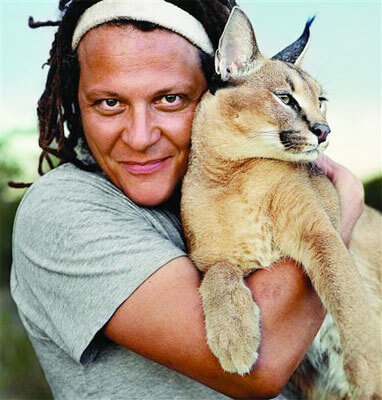Martin Schoeller is one of the world's preeminent contemporary portrait photographers. He is most known for his extreme-close up portraits, a series in which familiar faces are treated with the same scrutiny as the unfamous. The stylistic consistency of this work creates a democratic platform for comparison between his subjects, challenging a viewer's existing notions of celebrity, value and honesty.
Growing up in Germany, Schoeller was deeply influenced by
August Sander's countless portraits of the poor, the working class and the bourgeoisie, as well as Bernd and Hilla Becher, who spawned a school of photographic typology known as the Becher-Schüler. Schoeller's close-up portraits emphasize, in equal measure, facial features, of his subjects - world leaders and indigenous groups, movie stars and the homeless, athletes and artists - leveling them in an inherently democratic fashion.
Schoeller studied photography at the Lette Verein and moved to New York in the mid-1990s where he began his career. Producing portraits of people he met on the street, his work soon gained recognition for its strong visual impact and since 1998 he has contributed to publications such as
National Geographic,
The New Yorker,
Vanity Fair,
TIME Magazine,
The New York Times Magazine,
Rolling Stone and
GQ, among others.
Martin's print and motion work has appeared in many major advertising campaigns ranging from pharmaceuticals, cars and entertainment. His work has won many awards, but most recently he received praise for his
Colin Kaepernick image in Nike's “Just do it” campaign which won a prestigious D&AD black pencil and the outdoor Grand Prix at Cannes. Some other advertising clients include: KIA, Chevron, Allstate, HBO, Coca-Cola, AT&T, Mercedes, DreamWorks, Southwest Airlines, GE and Johnnie Walker.
Schoeller's portraits are exhibited and collected internationally, appearing in solo exhibitions in Europe and the United States, as well as part of the permanent collection of the
National Portrait Gallery,
Smithsonian Institution, Washington, DC. Martin lives and works in New York City
Must Read Articles
75 Portraits of Holocaust Survivors Photographed by Martin Schoeller
Martin Schoeller exhibits with 'Holocaust Survivors' in Maastricht
A native of Germany, Schoeller, who now lives and works in New York, honed his skills by working with
Annie Leibovitz.
“Watching her deal with all of the elements that have to come together—subjects, lighting, production, weather, styling, location—gave me an insight into what it takes to be a portrait photographer,” he explains.
Equally important for Schoeller was the photography of German minimalists
Bernd and Hilla Becher, who
“inspired me to take a series of pictures, to build a platform that allows you to compare.” Schoeller’s portraiture brings viewers eye-to-eye with the well-known and the anonymous. His close-up style emphasizes, in equal measure, the facial features, both studied and unstudied, of his subjects—presidential candidates and Pirahã tribespeople, movie stars and artists—leveling them in an inherently democratic fashion. Schoeller’s photographs challenge us to identify the qualities that may, under varying circumstances, either distinguish individuals or link them together, raising a critical question: "What is the very nature of the categories we use to compare and contrast."
Source: National Portrait Gallery
Websites
martinschoeller.com
@martinschoeller
@martinschoellerstudio.com
Agency
August Image
Galleries
Camera Work
A Gallery
Exhibition
Death Row Exonerees
